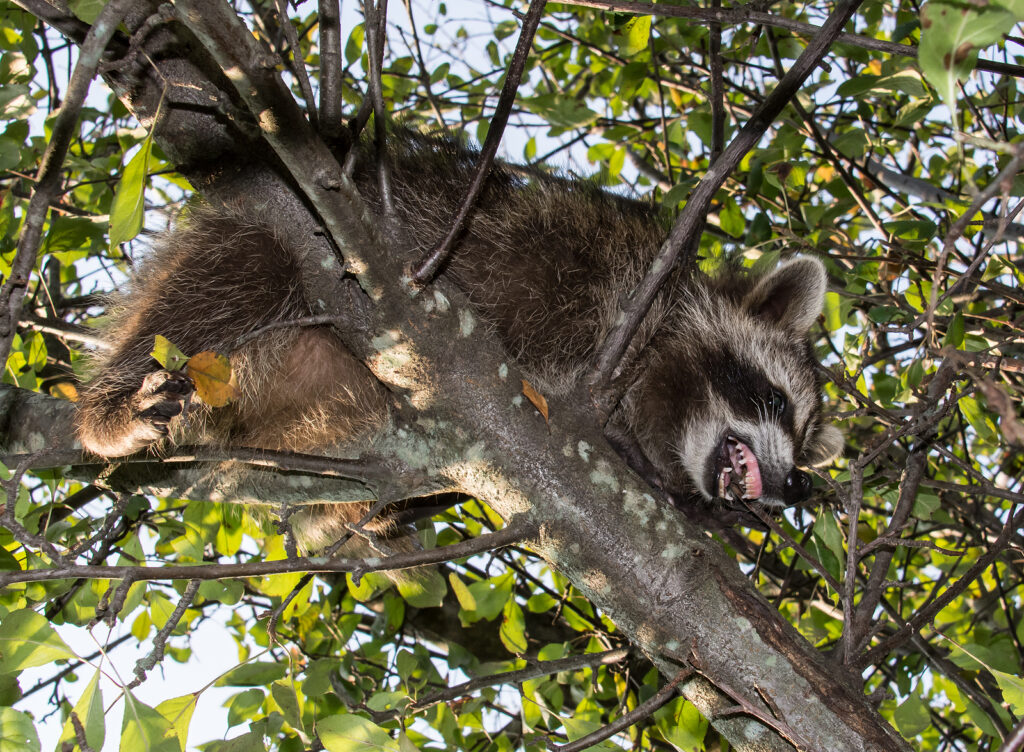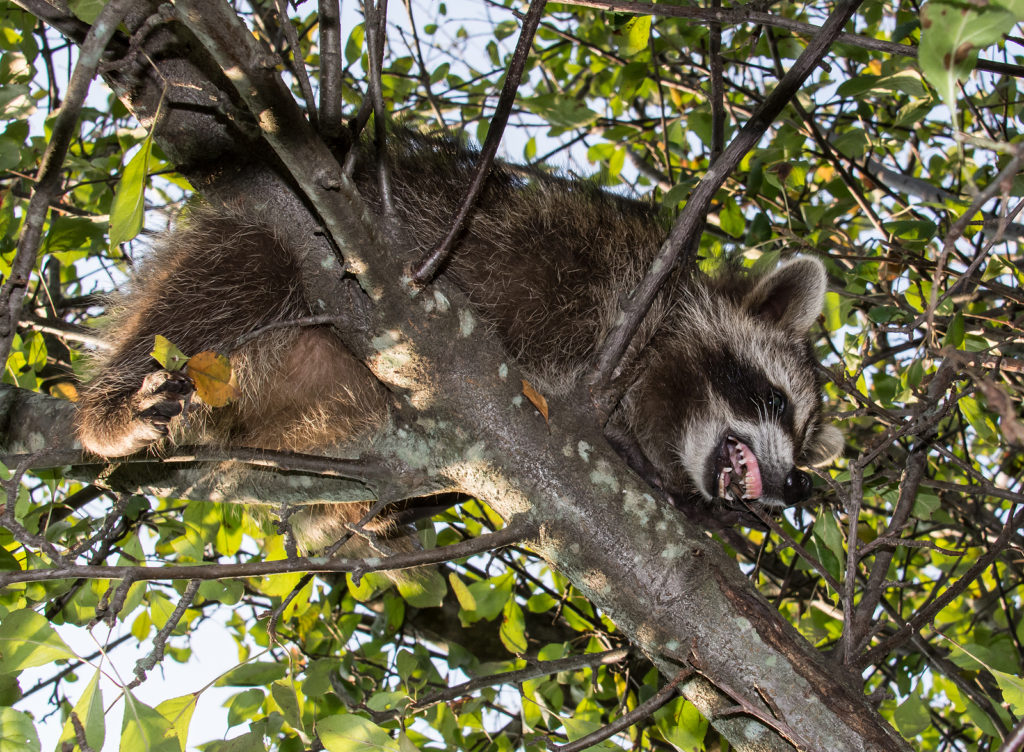Do you see raccoons on or around your property regularly? Have you been concerned about the potential risk for contracting Rabies through a raccoon bite or scratch? Continue reading to learn what a an actively rabid raccoon looks like, as well as some pertinent facts about raccoons and the Rabies Virus.

Raccoons are a Rabies Vector Species (RVS)
Raccoons are stunning in appearance and have been known to make fun lovable pets; but there is another side to raccoons we must all be aware of. Unfortunately, raccoons are classified as a Rabies Vector Species (RVS) in most states, which means they are a species of wildlife capable of carrying and transmitting the Rabies Virus to humans and other animals. Although all mammals can become infected with rabies, raccoons are more at risk because their bodies can act as reservoirs for the virus.
If a human or animal is bitten by a raccoon, whether it’s rabid or not, they must call animal control and immediately seek medical attention. Always behave as if a wild animal is carrying a disease if ever attacked or bitten. If a person or another pet is bitten by a dog that has not had a rabies vaccination, always behave as if the dog is carrying the virus and seek immediate medical care, just in case.
How to Tell if a Raccoon is Rabid
Even though you should always take action as if a wild animal is rabid, it is good knowledge to know what one looks like. A healthy raccoon should be out at night, or dusk. Also, they should appear healthy, walk straight, and seem as though they have an agenda. A healthy raccoon should exhibit all characteristics that a mammal in good condition would. Now, as for a rabid raccoon, the signs are not so pretty.
Here are the signs that a raccoon is infected with the rabies virus:
⚠ The raccoon cannot walk straight or has trouble walking. They might even appear to be intoxicated or confused and might also be walking in circles.
⚠ The raccoon appears confused, disoriented, or reacting slow. The raccoon is making strange sounds and noises. A little chit chatter with other coons is normal, but strange noises while out and about is not.
⚠ The raccoon is foaming at the mouth or has an abnormal amount of saliva. The raccoon may look like its drooling excessively. But no one should ever be close enough to a raccoon to see the foam in their mouths!
⚠ The raccoon looks ill, weak, or dying. The raccoon is out during the daytime hours. Although a healthy raccoon can do this from time to time, if a raccoon is demonstrating any of the above signs in addition to being out during the day, it may be rabid.
Are you dealing with repeat raccoon intrusions and property tampering in Indy? Contact Indianapolis Raccoon Removal at 317-535-4605 for prompt and professional Indianapolis raccoon control services you can trust.
Related Posts:
What Happens When a Raccoon Has Rabies?
Sick Raccoons: If it’s Not Rabies, it’s Probably Distemper
Why Do I See Raccoons Out at Daytime?


